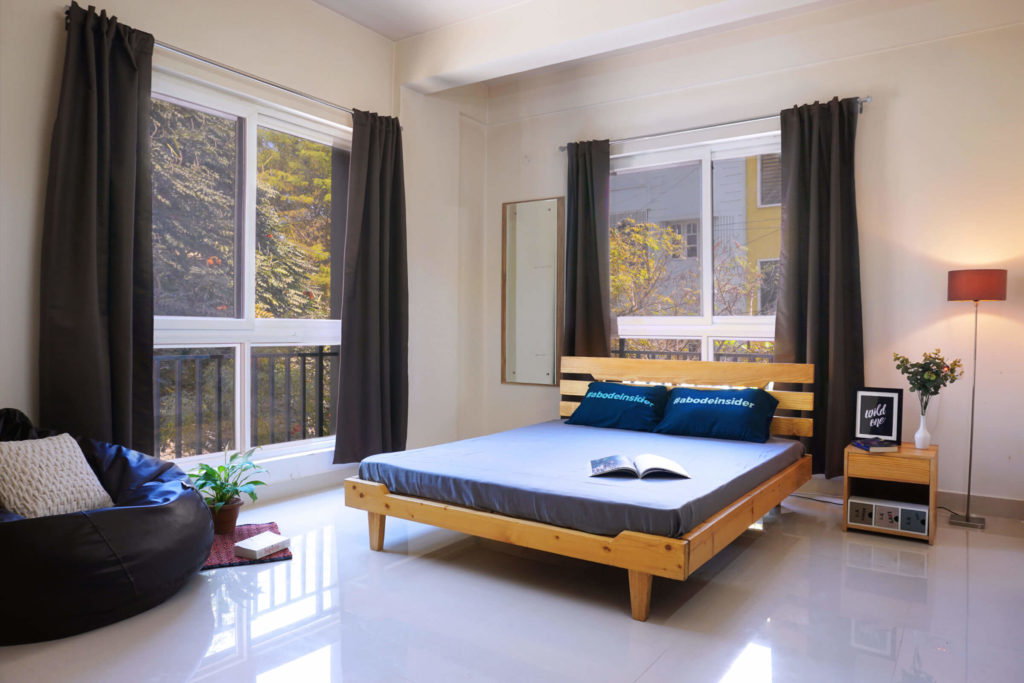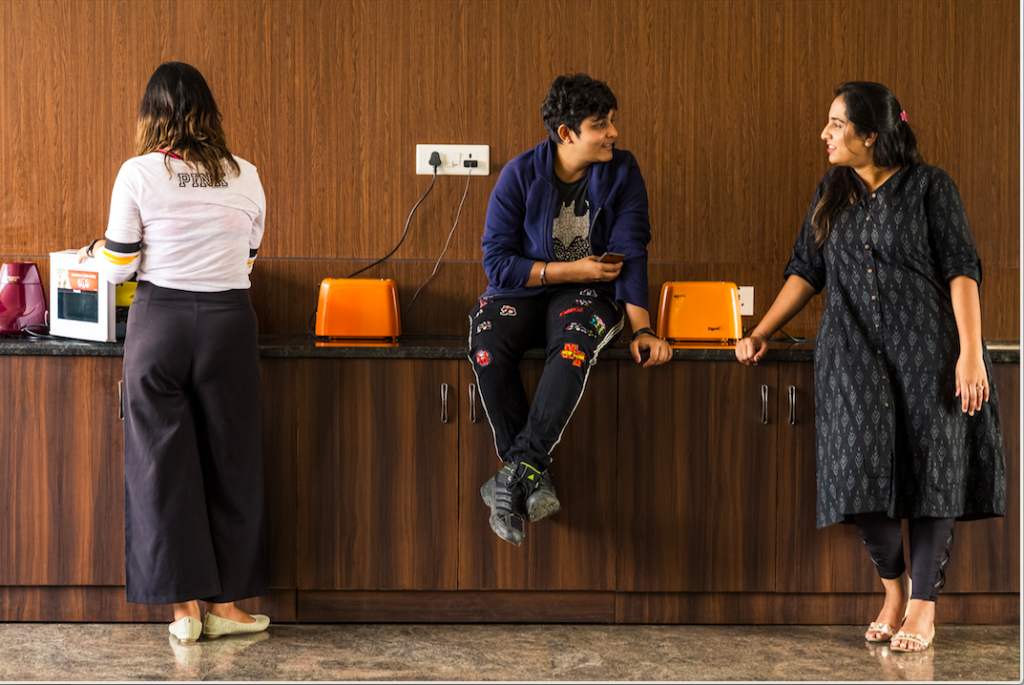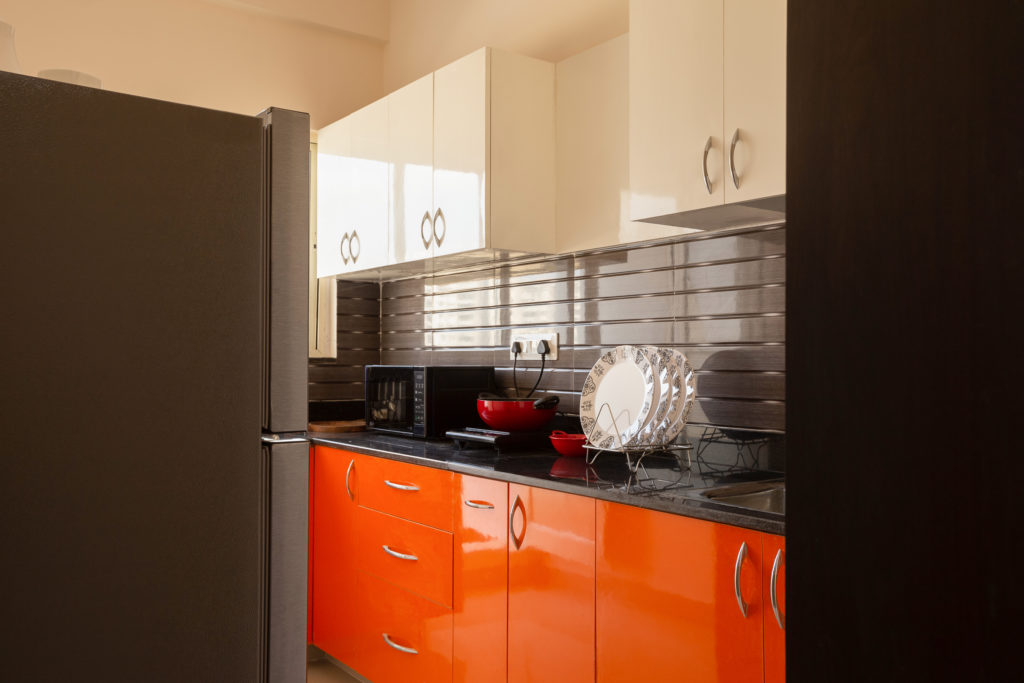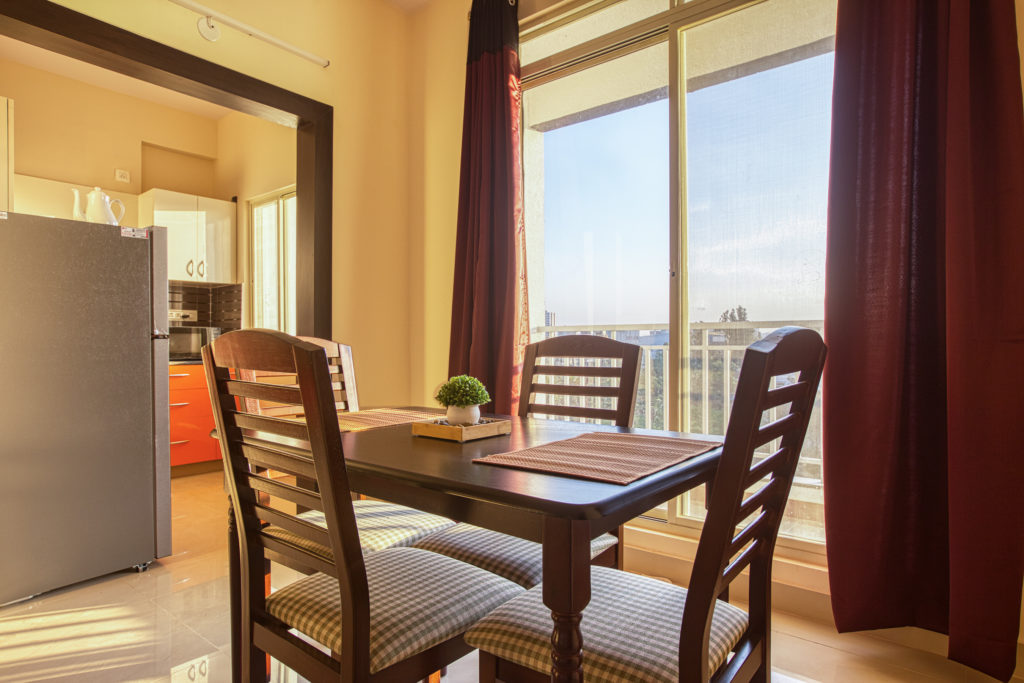Cohesive Cues
Co-living is emerging as an all new way that millennials are choosing to live in a shared community environment.
Picture this. You are a single, working professional, with an arduous job which leaves you with little time to cook and take care of regular chores. What if you had a space you could call home and still have a warm plate of breakfast every morning before you leave for work and all your household chores and maintenance would be taken care of? And if you have access to amenities like Wi-Fi, DTH and a fun, sharing community it would be utopia right? Well, this is what you can now have for real – welcome to the world of co-living. This is where you share your living space and in return are welcomed into a vibrant habitat for a cost-effective and well-maintained lifestyle.

The Specifics
Co-living is a relatively new concept and at a very nascent stage in India. While the concept of living in shared spaces can be seen almost as an offshoot of the co-working idea, co-living as a practice dates back to several decades to what was then communal living- people with similar values and beliefs wanting to share resources and live together. However, in today’s times, the motive is quite different. “It is more to do with wanting to move towards a sustainable way of living by maximizing on space that is available, on demand, and lowering dependency on resources that can be shared and not owned for convenience, given the highly mobile nature of these tenants. The concept is far more popular in cities that have witnessed a higher migratory population who are open to exploring such options given its convenience as most of co-living centres will cater to basic amenities for a far more economical price in more accessible locations than regular rental housing options,” says Meghna Agarwal, Co-founder and COO, IndiQube. The thought of moving into a place that has all basic facilities for a better price in comparison to regular rental housing or hostel is very appealing to today’s millennials who do not want to be tied down by ownership. In fact, the organised co-living space has seen a growth of around 100 per cent in the last one year.
Demand Drivers
Co-working and car-pooling have become viable options for the millennial workforce, and an exciting new trend co-living is also beginning to make its mark with the burgeoning student and working populations across Indian cities. Co-living is a modern way of living better together. It is an amalgamation of convenient, affordable city-living and inspiring community living. A combination of all our urban living woes have come together to give rise to co-living as a living option and an asset class, from very high rentals in prime areas where most of our work hubs are. Viral Chhajer, Co-founder & CEO of StayAbode says, “another huge issue reported by millennials moving to city today is loneliness. People are looking for companionship and likeminded people and community living solves for that too. So by providing both a managed free living experience and community living through tech and events, co-living is creating spaces that solve for your daily living needs and lifestyle needs.” With shared spaces, events and gatherings hosted every so often, residents can indulge in a rich and engaging network of people, perspectives and experiences. According to a recent survey by Knight Frank India titled ‘Co-Living — rent a lifestyle’ covering Mumbai, Bengaluru, Pune, Hyderabad and NCR, 72 per cent of millennials prefer co-living spaces and over 55 per cent respondents in the age group of 18-35 years are willing to rent co-living spaces. Most of the young population are shifting to new cities in search of quality education and career prospects. Their living choices are getting bolder and more demanding in terms of personal space. Cultural diversity in India is also overwhelming, when the coliving community comes together to celebrate occasions of regional and cultural significance, it is not something that can be found anywhere else in the world.

Cost of Convenience
Co-living as a notion is all about sharing lifestyles and resources. Sharing also reduces energy consumption drastically in terms of electricity and water as most spaces home-cook food in bulk for residents, thereby reducing wastage. “Zolo’s soon-to-launch product will use aspects such as gamification, quantification of qualitative aspects of a resident such as friendliness, good health, and mindfulness and will be a community-driven social platform for all Zoloites. It will also use deeper data analytics to further connect Zoloites of common interest. While this product will eventually include a host of events such as movie screenings, outdoor events, yoga sessions, book clubs, and study groups the product’s focus will be to provide a string of features that bring together our residents in one and multiple communities, making it a truly happy place,” says Nikhil Sikri, Co-Founder and CEO, Zolo. “I have been staying in Colive since the past three months and my experience has been amazing in terms of services, location and the joy of staying with people who are pleasant and cordial. I have always got spontaneous response from the Colive Team whenever I faced any issue with any household or security services. Their Emergency Responsive Team is very responsive at all points of time. It is in true term fully managed rental accommodation for young millennials and coliving is a pleasantly different experience,” avers Susreetta Datta, 23, from Kolkata who currently resides in Colive Willis Tower in Bengaluru.

Now Trending
The space is still finding its equilibrium where different brands are still finding the right business model and different ways of achieving scale. “So, from an experience standpoint brands are trying different things, while at StayAbode we have continuously focussed on how tech and community will play a huge part on the resident experience. Tech is a piece where we feel we have created a huge differentiation and set standards from the perspective of all stakeholders as we have built platforms for the asset owners, residents and internal teams. The other strong trends being seen are in how design is creating interactive community spaces,” avers Chhajer. There are many players at the entry level of budgets for young professionals and the mix gives all players enough space to breathe in. “We are also launching our first large co-living asset in 2020 which will house over 1200 people which we believe will change the dynamics of the game significantly as it will be priced competitively and be offering world class facilities and a living ecosystem at the same time,” adds Chhajer. Given that co-living is a relatively new concept, newer players in the real estate sector are looking at newer models of on-demand service offerings that can cater to the more evolved consumer today.

Do the New
Apart from adoption of technology to improve reach and response time to customers, co-living spaces are creating build to suit models with vibrant common spaces that inspire and compliment the needs and taste of young millennials. “Community benefits in shared- space where costs and maintenance benefits are split among all residents is gaining popularity. There is also a demand for shorter lock-in period in cities due to the unpredictable migration trends in millennials as they are frequently on the move or shuttling between cities for job demands or career opportunities,” says Suresh Rangaraj, Founder and CEO, Colive. Given that co-living is a relatively new concept, newer players in the real estate sector are looking at newer models of on-demand service offerings that can cater to the more evolved consumer today. “Being a flexi work solutions player ourselves who also offers co-working, it occurred to us that, in addition to the various on demand services we are already providing our clients, we could even add housing as a service. For enterprises who sit out of our office space, they will have the option of using our co-living facility, which will be in the same building as the workspace, as corporate guest housing facility saving on both cost and commute time for employees,” says Agarwal. Co-living spaces are certainly changing the dynamics of accommodation, after all convenience matters. The trending top cities for co-living are predictably where the IT sector is based namely Bangalore, Chennai, Hyderabad, Pune and Gurugram. “The concept is gaining popularity and the masses are embracing the concept in India. Coliving is an extremely popular choice of living in the commercial cities of China due to space congestion and sky rocketing real estate prices around business hubs. Coliving is the new way of living in the cities and a preferred way to enjoy the desired lifestyle. Backpacking groups in Europe, young working professionals in Singapore, Hong Kong, students in Australia, Unites States and UK, people prefer to live in communal sets to get a feeling of homeliness and find a strong sense of belongingness. A place to connect exchange ideas, feel comfortable and safe in unfamiliar surroundings,” signs off Rangaraj.
This story first appeared in Smatlife’s Sep 2019 issue here:
